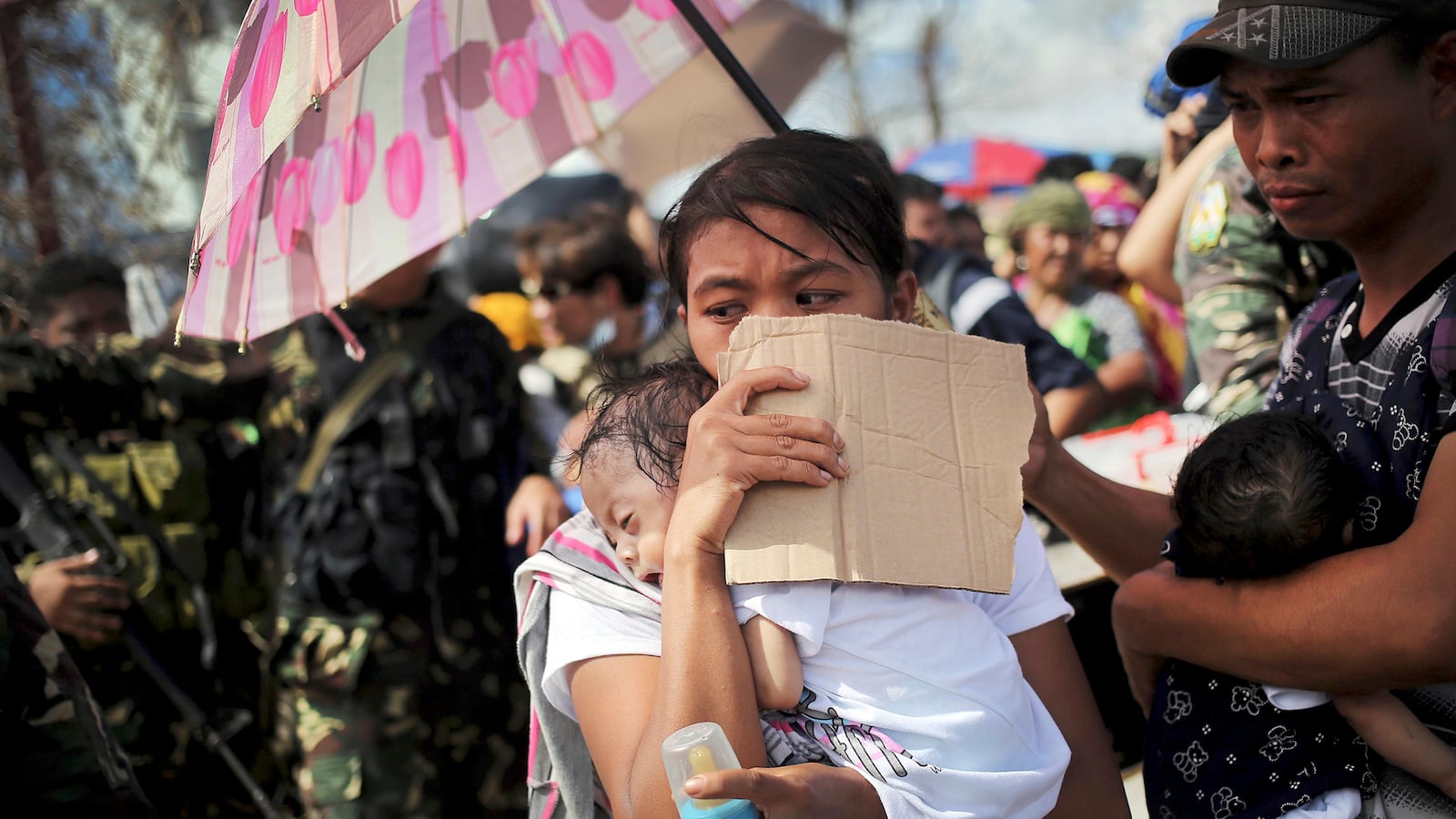By Tom Phillips
The deputy mayor of Tacloban, the Philippine city where thousands are thought to have died in Typhoon Haiyan, has issued a plea for armed Communist rebels to avoid stoking violence and help the government with the reconstruction effort.

Speaking to The Telegraph, Jerry Sambo Jaokasin conceded he was worried about the apparently deteriorating security situation in Tacloban and called on members of the New People’s Army, or NPA, to work with the government rather than fighting it.
“My message is that to rebuild this city we have to work together. Armed conflict will never solve the problem of hunger and empty stomachs,” he said.
He spoke as the US Navy said that its aircraft carrier the USS George Washington arrived to help the relief effort.
Mr Jaokasin was speaking one day after a military convoy that had been attempting to deliver 34 corpses to a mass burial was forced to turn back and return to base after soldiers believed they had come under fire.
Soldiers said the apparent attack was the work of the New People’s Army, a Communist rebel group that operates in some parts of the rural Philippines.
Mr Jaokasin was travelling in that convoy but claimed it was may have been a policeman giving a “warning shot” against looters. The bodies were due to be buried on Thursday, 24-hours after the incident.
But he said he was concerned with NPA activities in the city of Tacloban.
On Tuesday, two NPA rebels were reportedly killed after the government claimed they had attempted to ambush an aid convoy heading to Tacloban.
“All of us are victims. We have to set aside our ideological and political differences and we have to work hand in hand. That is the only way to rebuild our city and our country,” the deputy mayor said.
“I am sure that whatever ideology you belong to, what[ever] party you belong to, in times of calamity, at the end of the day, we are all Filipinos and we must help each other based not on our ideology but on our sense of humanity,” the vice-mayor added.
Security has become an increasing concern in the days following the disaster. In the city centre, heavily armed soldiers have improvised makeshift roadblocks from pieces of debris and erected signs reading: “Curfew: 8pm-5am.” Electricity has yet to be restored to downtown Tacloban and night-time shootings and ransacking have been reported in the area.
Hundreds of police officers have been deployed to Tacloban to “curb lawlessness”, according to local news. A police spokesman said it had received reports the NPA “has been invading villages and ambushing relief goods” in the region.
“Nobody dares to open [their shops] because they fear being looted,” the deputy mayor said. “Until now everyone’s mindset is that they fear for their lives, they fear for their safety. If you go to the airport it is like a modern day exodus.”
Heraldo Hermocilla, a chief inspector who was also travelling in the convoy that was forced to retreat on Wednesday, denied the “shooting incident” had been carried out by the NPA. Investigations showed it was more likely to have been locals shooting at looters, he added.
The deputy mayor defended his government from accusations that it did not do more to prepare its people for typhoon Haiyan.
“You cannot evacuate the whole population,” he said. “We prepared but it was just too much. There is no way you can prepare for this kind of super typhoon.” He called on foreign countries to help his country respond to the crisis.
“It is like the whole city has been obliterated.”
“We have citizens but we don’t have a city anymore and it will take years for us to rebuild the city unless all of you help us.”
Meanwhile the USS George Washington, an American aircraft carrier with 5,000 sailors aboard, arrived in the Philippines with badly-needed equipment, supplies and expertise for those left homeless. It will position just off the eastern coast of Samar island, according to Rear Admiral Mark Montgomery.
More From The Telegraph:
- Death toll for typhoon-ravaged Philippines doubles
- Typhoon Haiyan: how hundreds have spent week living with dead
- Government on defensive over slow response
This article by Tom Phillips was first published by The Telegraph.






